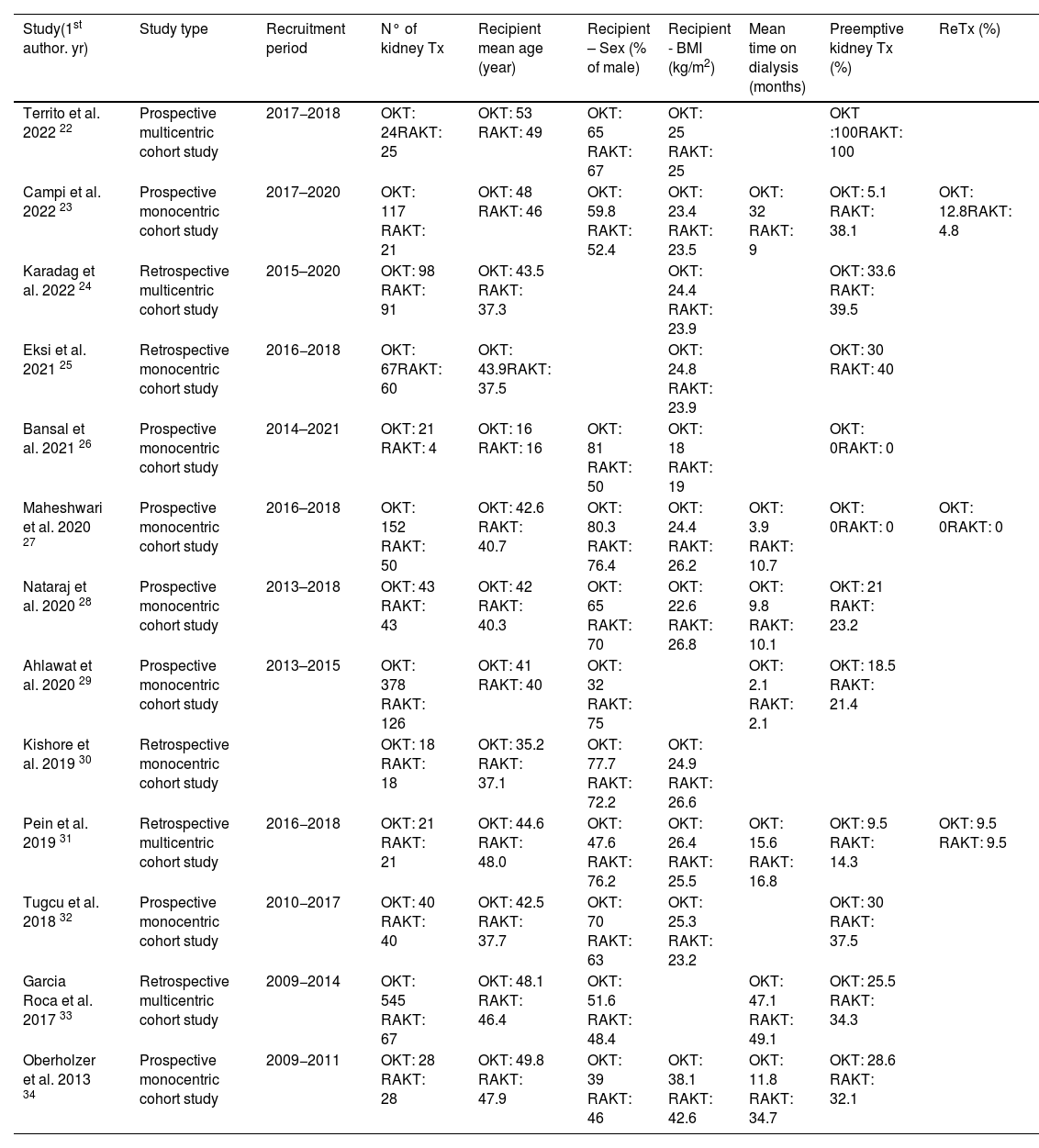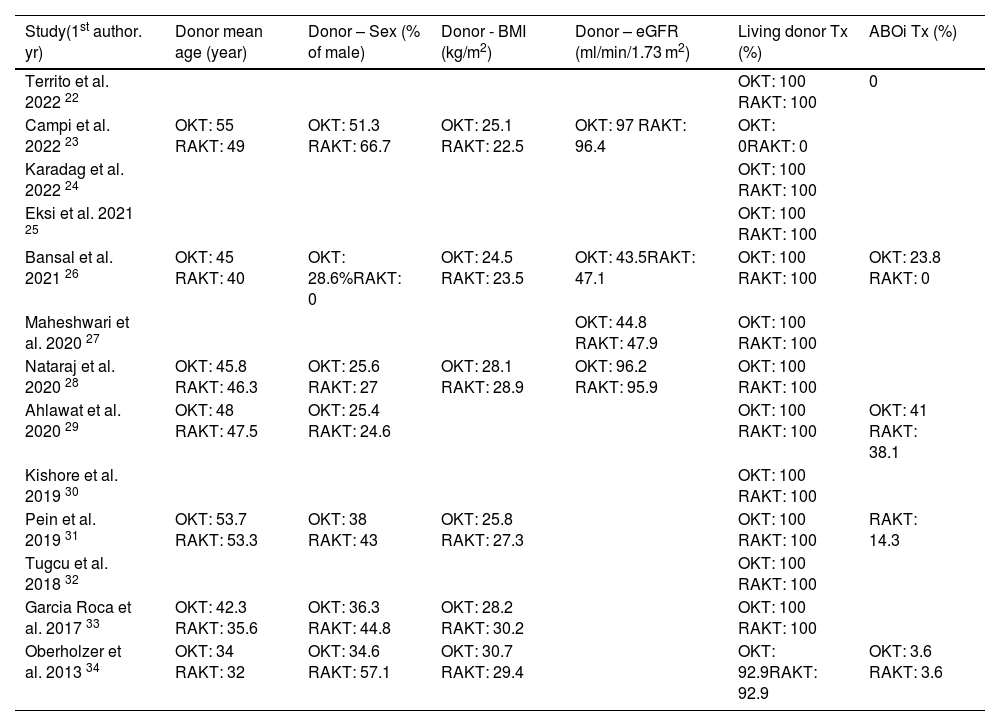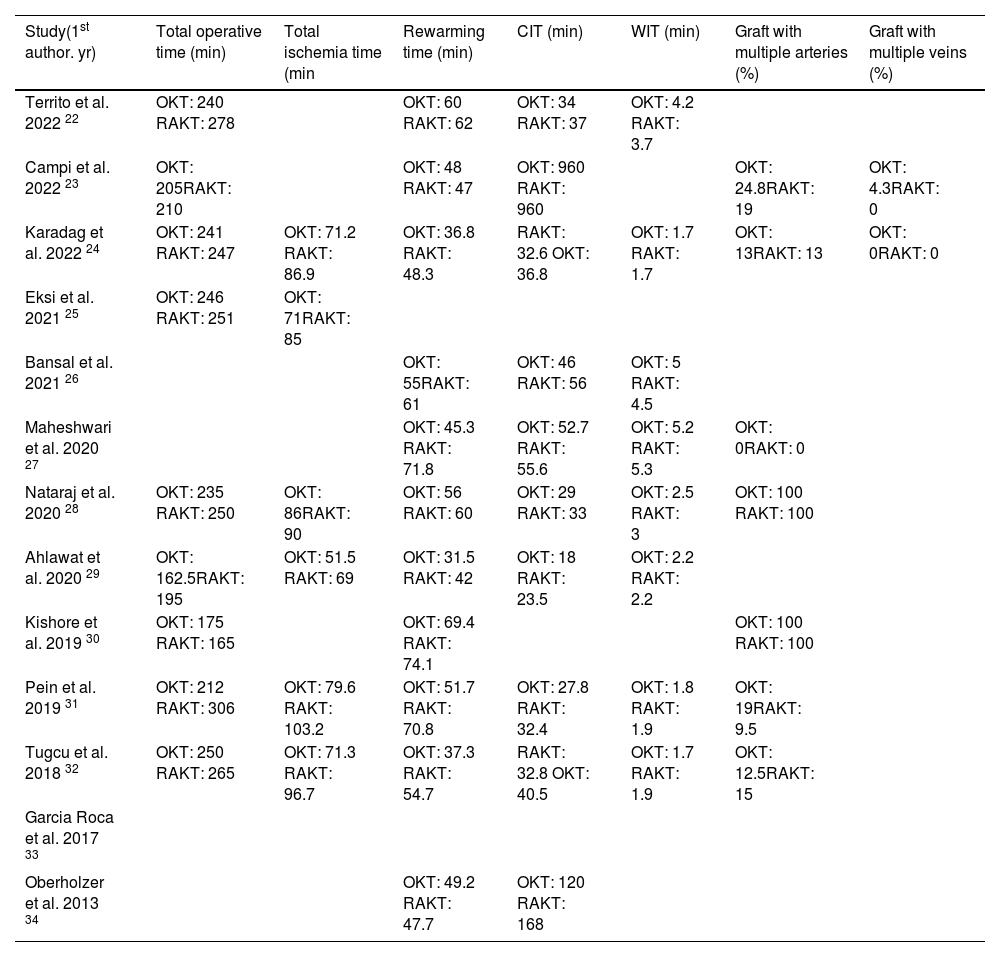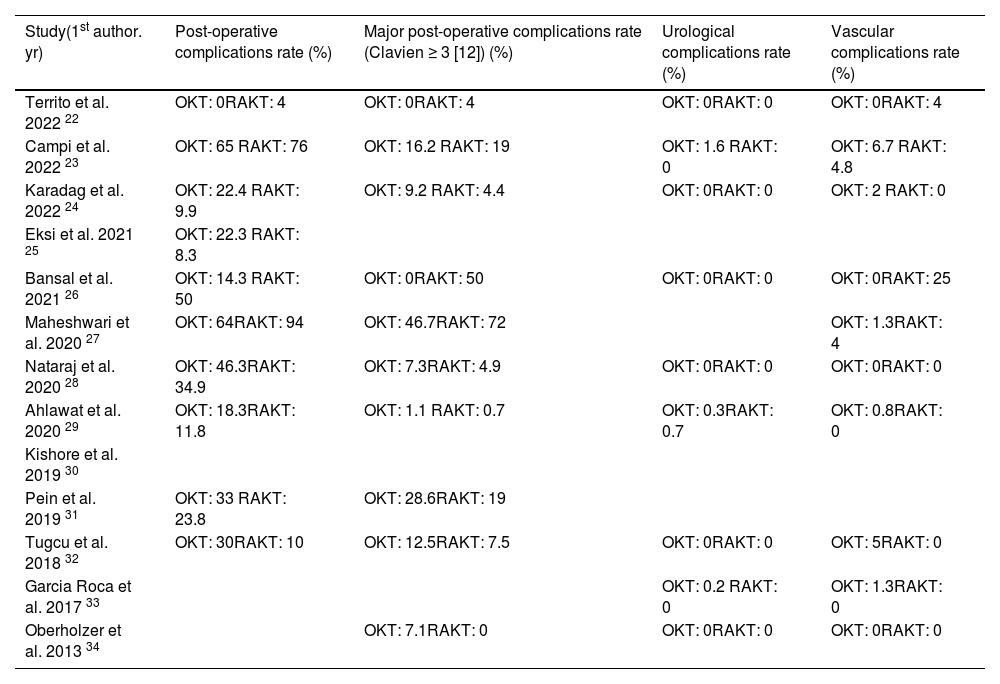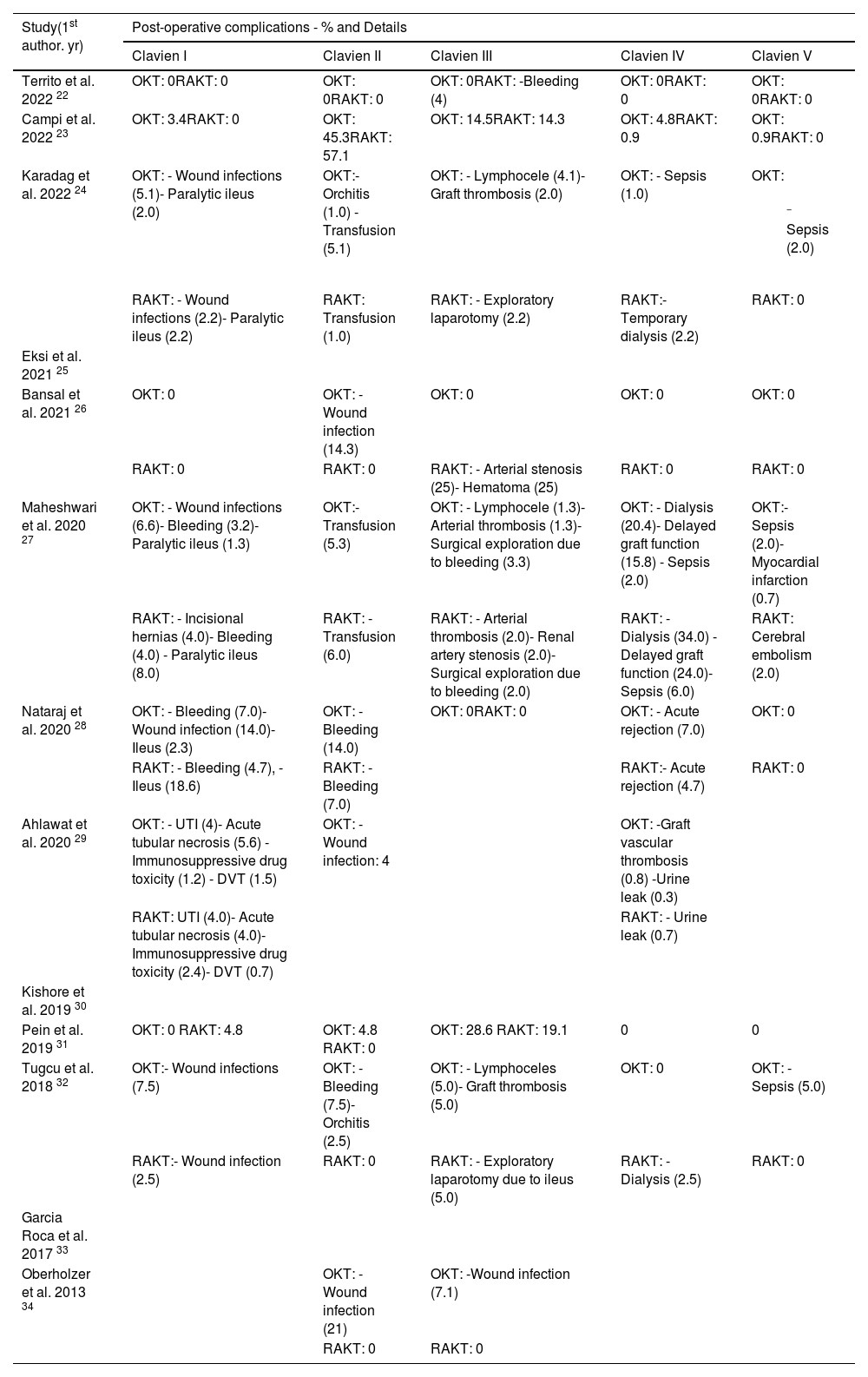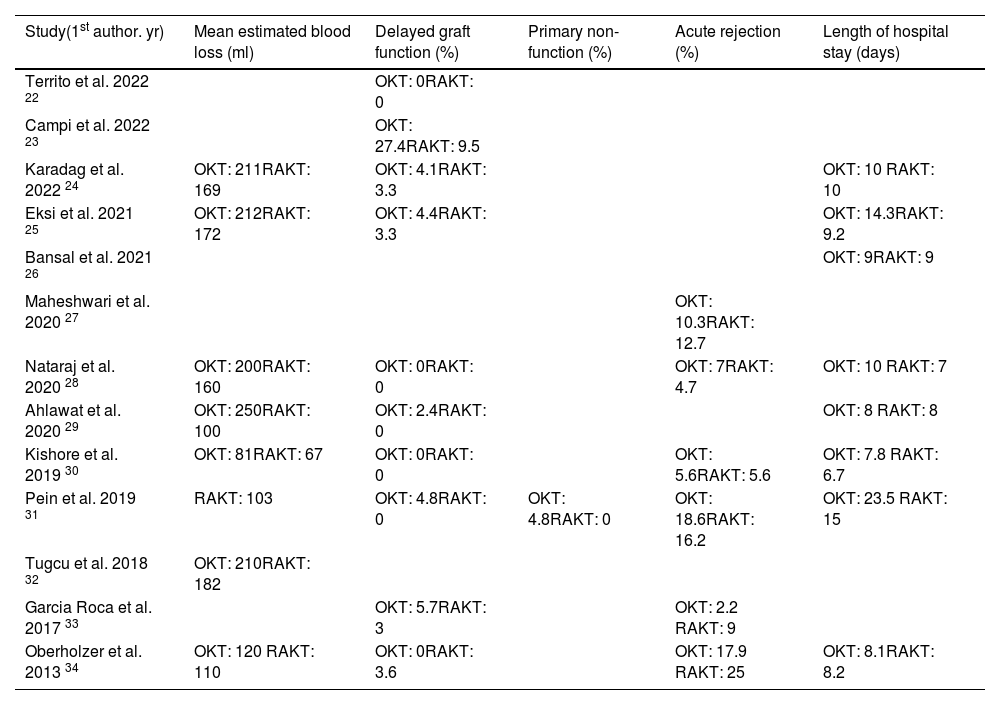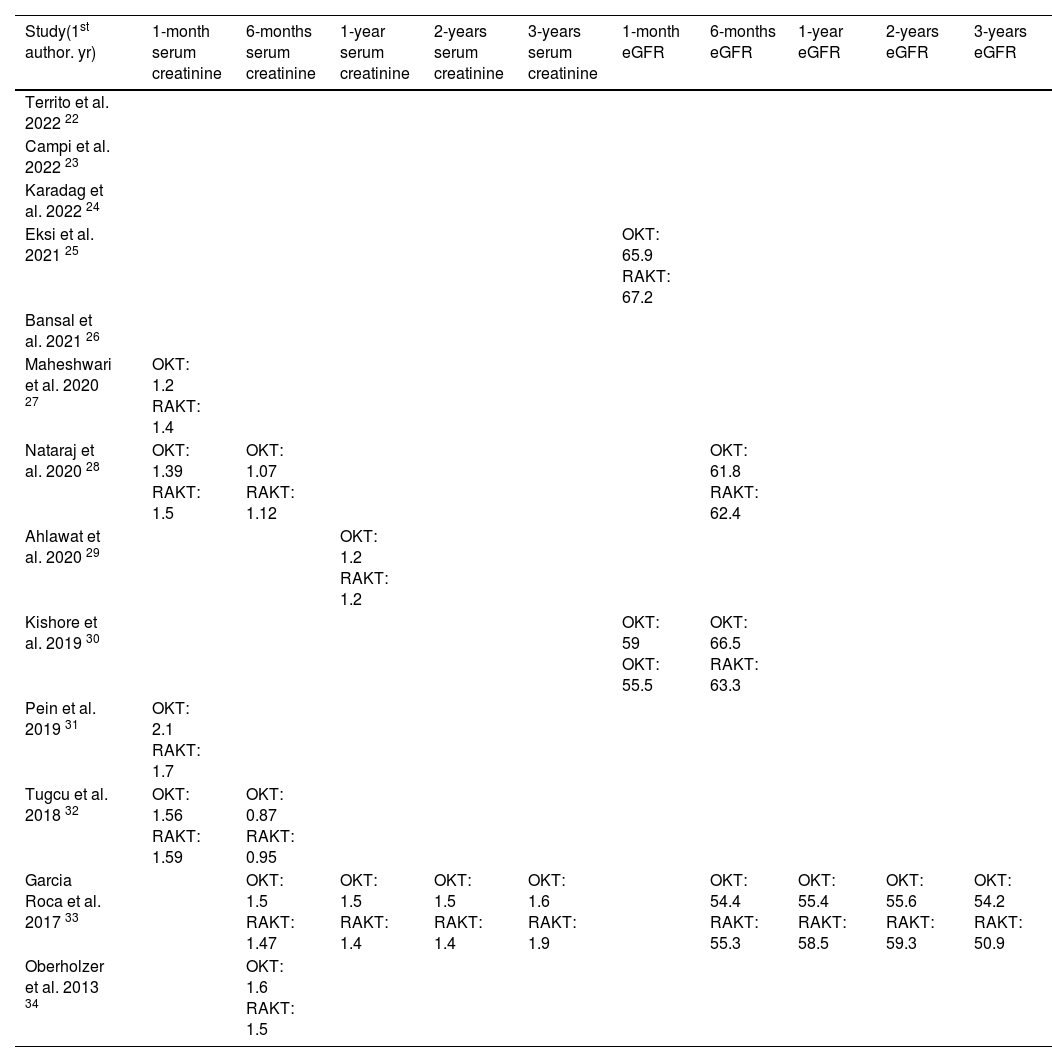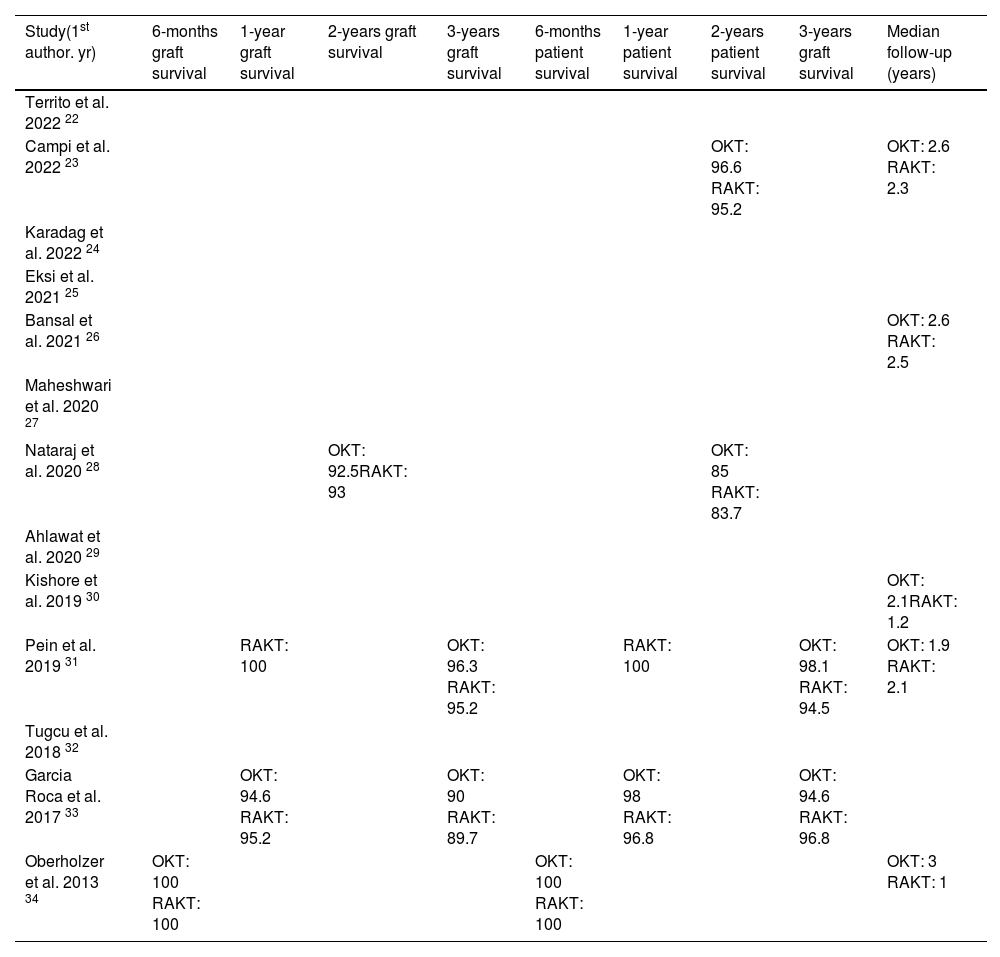In the last 20 years, robotic assisted procedures were evaluated in the field of kidney transplantation to provide a mini-invasive approach for this particularly fragile population. As a relatively new issue, few studies compared open kidney transplantation (OKT) and robotic-assisted kidney transplantation (RAKT), mostly in small cohorts. To improve current knowledge, we wanted here to gather comparative data of OKT vs RAKT in a systematic review.
MethodsA systematic review was performed according to preferred reporting items for systematic reviews and meta-analyses. Medline, Embase, and Cochrane databases were searched to identify all studies reporting post-operative outcomes of RAKT versus OKT.
ResultsA total of 2136 patients in 13 studies were included. Median recipient age was 42.6 years (OKT: 43.5 years and RAKT: 40.3 years). Median preemptive kidney transplantation rate was 27.1 % (OKT: 23.3 % and RAKT: 33.2 %). Median total operative time and rewarming were respectively: 235 and 49 min in OKT population; 250 and 60 min in RAKT population.
Post-operative complications rates were: 26.2 % in OKT population and 17.8 % in RAKT population. Delayed graft function rates were: 4.9 % in OKT population and 2.3 in RAKT population. Mid-term functional outcomes, patient and graft survival were similar in OKT and RAKT population.
ConclusionThis systematic review showed that RAKT may be associated with a lower incidence of delayed graft function and post-operative surgical complications and similar mid-term functional outcomes, patient and graft survival, compared to OKT for end-stage renal disease patients.
En los últimos 20 años se ha evaluado el uso de la robótica en el campo del trasplante renal como abordaje miniinvasivo a esta población especialmente vulnerable. Al tratarse de un campo relativamente novedoso, pocos estudios han comparado el trasplante renal abierto (TRA) y el trasplante renal asistido por robot (TRAR), la mayoría en cohortes pequeñas. Para ampliar los conocimientos actuales, hemos querido reunir en este documento datos comparativos de TRA frente a TRAR en una revisión sistemática.
MétodosSe realizó una revisión sistemática de acuerdo con la declaración de Preferred Reporting Items for Systematic Reviews and Meta-Analyses (PRISMA). Se realizaron búsquedas en las bases de datos Medline, Embase y Cochrane para identificar todos los estudios que informaran sobre los resultados postoperatorios del TRAR frente al TRA.
ResultadosUn total de 2.136 pacientes de 13 estudios fueron incluidos. La mediana de edad de los receptores fue de 42,6 años (TRA: 43,5 años y TRAR: 40,3 años). La mediana de la tasa de trasplante renal preventivo fue del 27,1 % (TRA: 23,3 % y TRAR: 33,2 %). La mediana del tiempo quirúrgico total y de recalentamiento fueron: 235 y 49 minutos, respectivamente, en la población TRA; 250 y 60 minutos en la población TRAR.
Las tasas de complicaciones postoperatorias fueron: 26,2 % en la población TRA y 17,8 % en la población TRAR. Las tasas de retraso en la función del injerto fueron: 4,9 % en la población TRA y 2,3 en la población TRAR. Los resultados funcionales a medio plazo y la supervivencia del paciente y del injerto fueron similares entre las poblaciones TRA y TRAR.
ConclusiónEsta revisión sistemática demostró que el TRAR puede asociarse a una menor incidencia de retraso en la función del injerto y de complicaciones quirúrgicas postoperatorias, así como a unos resultados funcionales a medio plazo y una supervivencia del paciente y del injerto similares, en comparación con el TRA para los pacientes con enfermedad renal terminal.








